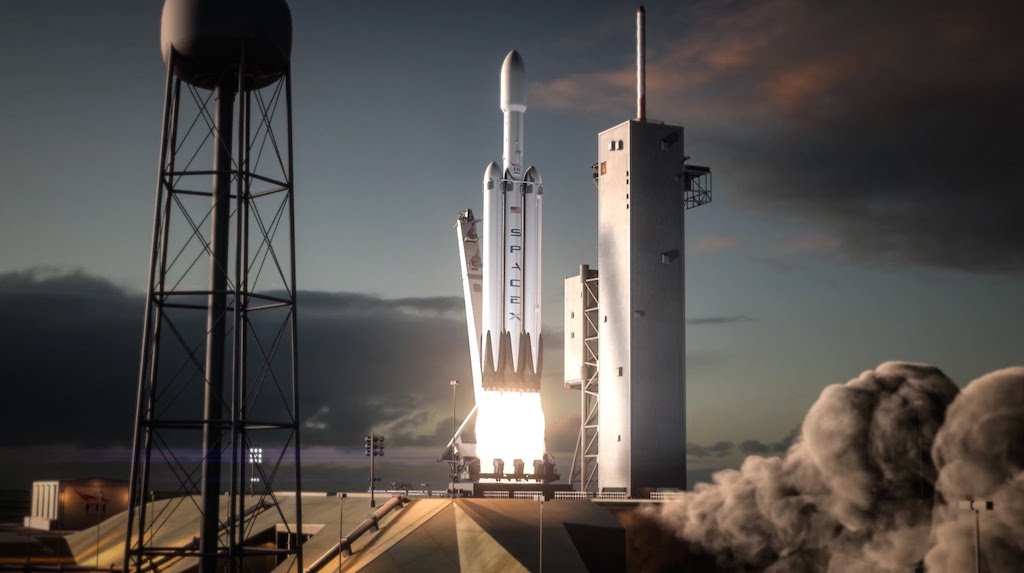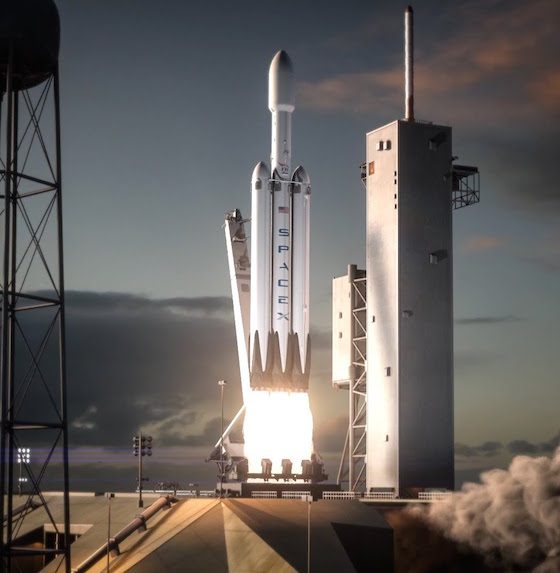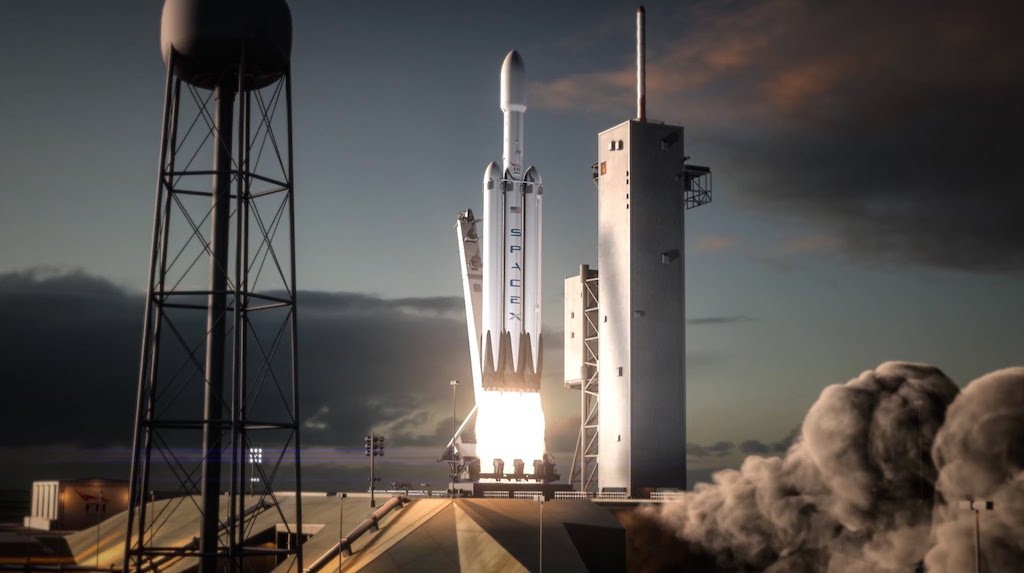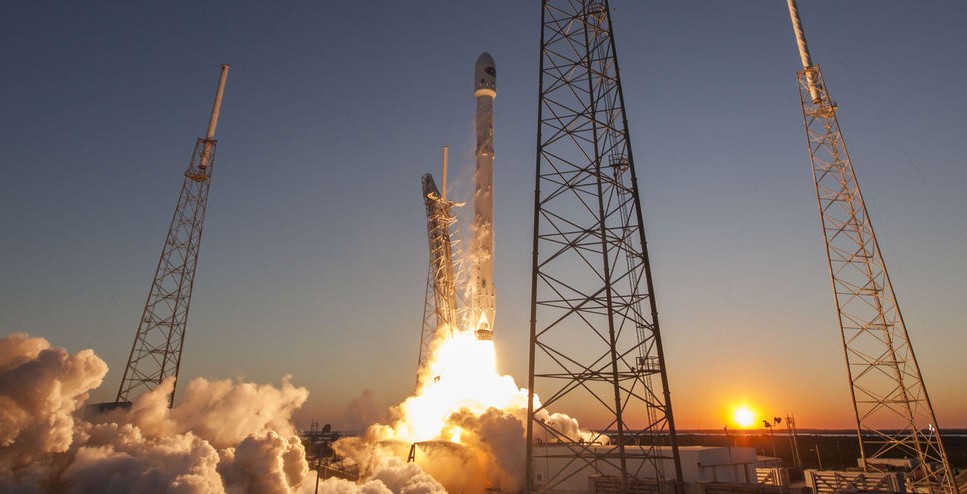

News
SpaceX Receives Pentagon Help To Develop New Rocket Engine
SpaceX has been awarded a Pentagon contract for development of its next generation Raptor rocket engine, which is 6 times more powerful than the Merlin engine it uses now.
The U.S. Department of Defense has announced a $33.7 million dollar contract awarded to SpaceX for the development of the Raptor rocket propulsion system prototype as part of the Evolved Expendable Launch Vehicle (EELV) program. The Raptor engine burns a mixture of liquid methane and liquid oxygen, and designed to produce six times the thrust of the Merlin engines SpaceX recently used on its historic mission that saw its first stage rocket land itself back on earth from orbit. Here’s why that’s important to SpaceX.
Currently, virtually all large military satellites launches are done by the United Launch Alliance, a consortium made up of Lockheed Martin and Boeing. In 2013, ULA was awarded a $1.1 billion contract for multiple launches using Lockheed Martin’s Atlas V or Boeing’s Delta IV rockets. SpaceX wants a piece of that pie.
According to Motley Fool, both ULA rockets use RD-180 engines purchased from Russia’s Energomash, which is majority owned by the Russian government. After Russia’s 2014 actions in Crimea, the US slapped economic sanctions on it and Energomash. They in turn decided they would not sell any more rocket engines to ULA. The US Congress responded to that by prohibiting the US military from using any Russian rocket engines to launch its satellites.
But Houston, we have a problem. No rocket engines means no satellite launches. ULA placed its hopes on either Blue Origin or Aerojet Rocketdyne coming up with a new rocket engine to replace the RD-180 it can no longer buy from Energomash, but that process could take 3 or 4 years to complete.
So Congress has relented somewhat. Buried in the more than 1,000 page appropriations bill approved just before Christmas, it gave ULA approval to buy a supply of RD-180s — just enough to keep it in the military launch business for the time being. But clearly, America needs American made rockets for its various space programs going forward.

“SpaceX Falcon Heavy will be the most powerful operational rocket in the world by a factor of two” [Source: SpaceX]
Enter SpaceX, which received authorization to bid for Pentagon business last year. The next generation Raptor engines will be used to power the upcoming Falcon 9 “heavy lift” and “super heavy lift” rockets. The more powerful Falcon 9 could be used in place of the traditional satellite launching vehicles from Lockheed and Boeing. That would open the door for lucrative government contracts to flow to SpaceX instead of ULA.
There is a lot of money up for grabs launching satellites for the military over next several years. SpaceX has been funding its Raptor engine program out of its own pocket up until now, but under terms of the new contract, the Pentagon will provide $1 in development funding for every $2 invested by SpaceX.
Lockheed and Boeing might be giving way to the Aerospace upstart. SpaceX, like every venture Elon Musk is involved with, will put every ounce of effort into getting to the finish line ahead of everyone else.
More SpaceX News
- SpaceX Shows Off Crew Dragon Capsule Hover Test
- SpaceX Delivers Jason-3 Satellite, Almost Sticks Falcon 9 Landing at Sea
- Watch as SpaceX Completes a Historic Rocket Landing

News
Tesla aims to combat common Full Self-Driving problem with new patent
Tesla writes in the patent that its autonomous and semi-autonomous vehicles are heavily reliant on camera systems to navigate and interact with their environment.

Tesla is aiming to combat a common Full Self-Driving problem with a new patent.
One issue with Tesla’s vision-based approach is that sunlight glare can become a troublesome element of everyday travel. Full Self-Driving is certainly an amazing technology, but there are still things Tesla is aiming to figure out with its development.
Unfortunately, it is extremely difficult to get around this issue, and even humans need ways to combat it when they’re driving, as we commonly use sunglasses or sun visors to give us better visibility.
Cameras obviously do not have these ways to fight sunglare, but a new patent Tesla recently had published aims to fight this through a “glare shield.”
Tesla writes in the patent that its autonomous and semi-autonomous vehicles are heavily reliant on camera systems to navigate and interact with their environment.

The ability to see surroundings is crucial for accurate performance, and glare is one element of interference that has yet to be confronted.
Tesla described the patent, which will utilize “a textured surface composed of an array of micro-cones, or cone-shaped formations, which serve to scatter incident light in various directions, thereby reducing glare and improving camera vision.”

The patent was first spotted by Not a Tesla App.
The design of the micro-cones is the first element of the puzzle to fight the excess glare. The patent says they are “optimized in size, angle, and orientation to minimize Total Hemispherical Reflectance (THR) and reflection penalty, enhancing the camera’s ability to accurately interpret visual data.”
Additionally, there is an electromechanical system for dynamic orientation adjustment, which will allow the micro-cones to move based on the angle of external light sources.
This is not the only thing Tesla is mulling to resolve issues with sunlight glare, as it has also worked on two other ways to combat the problem. One thing the company has discussed is a direct photon count.
CEO Elon Musk said during the Q2 Earnings Call:
“We use an approach which is direct photon count. When you see a processed image, so the image that goes from the sort of photon counter — the silicon photon counter — that then goes through a digital signal processor or image signal processor, that’s normally what happens. And then the image that you see looks all washed out, because if you point the camera at the sun, the post-processing of the photon counting washes things out.”
Future Hardware iterations, like Hardware 5 and Hardware 6, could also integrate better solutions for the sunglare issue, such as neutral density filters or heated lenses, aiming to solve glare more effectively.
Elon Musk
Delaware Supreme Court reinstates Elon Musk’s 2018 Tesla CEO pay package
The unanimous decision criticized the prior total rescission as “improper and inequitable,” arguing that it left Musk uncompensated for six years of transformative leadership at Tesla.

The Delaware Supreme Court has overturned a lower court ruling, reinstating Elon Musk’s 2018 compensation package originally valued at $56 billion but now worth approximately $139 billion due to Tesla’s soaring stock price.
The unanimous decision criticized the prior total rescission as “improper and inequitable,” arguing that it left Musk uncompensated for six years of transformative leadership at Tesla. Musk quickly celebrated the outcome on X, stating that he felt “vindicated.” He also shared his gratitude to TSLA shareholders.
Delaware Supreme Court makes a decision
In a 49-page ruling Friday, the Delaware Supreme Court reversed Chancellor Kathaleen McCormick’s 2024 decision that voided the 2018 package over alleged board conflicts and inadequate shareholder disclosures. The high court acknowledged varying views on liability but agreed rescission was excessive, stating it “leaves Musk uncompensated for his time and efforts over a period of six years.”
The 2018 plan granted Musk options on about 304 million shares upon hitting aggressive milestones, all of which were achieved ahead of time. Shareholders overwhelmingly approved it initially in 2018 and ratified it once again in 2024 after the Delaware lower court struck it down. The case against Musk’s 2018 pay package was filed by plaintiff Richard Tornetta, who held just nine shares when the compensation plan was approved.
A hard-fought victory
As noted in a Reuters report, Tesla’s win avoids a potential $26 billion earnings hit from replacing the award at current prices. Tesla, now Texas-incorporated, had hedged with interim plans, including a November 2025 shareholder-approved package potentially worth $878 billion tied to Robotaxi and Optimus goals and other extremely aggressive operational milestones.
The saga surrounding Elon Musk’s 2018 pay package ultimately damaged Delaware’s corporate appeal, prompting a number of high-profile firms, such as Dropbox, Roblox, Trade Desk, and Coinbase, to follow Tesla’s exodus out of the state. What added more fuel to the issue was the fact that Tornetta’s legal team, following the lower court’s 2024 decision, demanded a fee request of more than $5.1 billion worth of TSLA stock, which was equal to an hourly rate of over $200,000.
Delaware Supreme Court Elon Musk 2018 Pay Package by Simon Alvarez
News
Tesla Cybercab tests are going on overdrive with production-ready units
Tesla is ramping its real-world tests of the Cybercab, with multiple sightings of the vehicle being reported across social media this week.

Tesla is ramping its real-world tests of the Cybercab, with multiple sightings of the autonomous two-seater being reported across social media this week. Based on videos of the vehicle that have been shared online, it appears that Cybercab tests are underway across multiple states.
Recent Cybercab sightings
Reports of Cybercab tests have ramped this week, with a vehicle that looked like a production-ready prototype being spotted at Apple’s Visitor Center in California. The vehicle in this sighting was interesting as it was equipped with a steering wheel. The vehicle also featured some changes to the design of its brake lights.
The Cybercab was also filmed testing at the Fremont factory’s test track, which also seemed to involve a vehicle that looked production-ready. This also seemed to be the case for a Cybercab that was spotted in Austin, Texas, which happened to be undergoing real-world tests. Overall, these sightings suggest that Cybercab testing is fully underway, and the vehicle is really moving towards production.
Production design all but finalized?
Recently, a near-production-ready Cybercab was showcased at Tesla’s Santana Row showroom in San Jose. The vehicle was equipped with frameless windows, dual windshield wipers, powered butterfly door struts, an extended front splitter, an updated lightbar, new wheel covers, and a license plate bracket. Interior updates include redesigned dash/door panels, refined seats with center cupholders, updated carpet, and what appeared to be improved legroom.
There seems to be a pretty good chance that the Cybercab’s design has been all but finalized, at least considering Elon Musk’s comments at the 2025 Annual Shareholder Meeting. During the event, Musk confirmed that the vehicle will enter production around April 2026, and its production targets will be quite ambitious.









